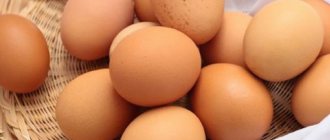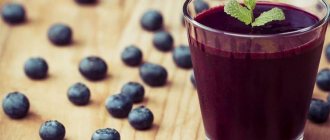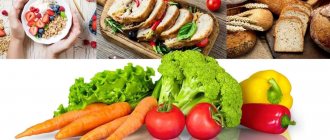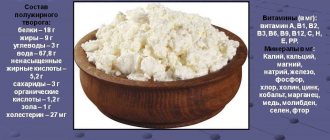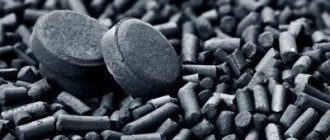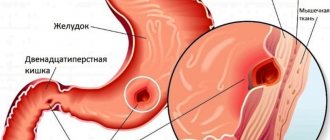If we accept that all acute and chronic diseases of the small intestine of any etiology can be called enteritis, the purpose of the article will be to talk about therapeutic nutrition for enteritis.
Chronic diseases of the small intestine most often develop as a result of untimely or improper treatment of acute intestinal diseases or as a consequence of chronic diseases of other digestive organs (liver, stomach, biliary tract, pancreas). They are characterized by:
- irregular bowel movements - diarrhea or constipation,
- sometimes diarrhea changes to constipation,
- abdominal pain,
- increased gas formation,
- nausea, heartburn, belching and other dyspeptic symptoms.
Nutritional therapy is one of the main methods of treating acute and chronic diseases of the small intestine of any etiology.
The main goal of therapeutic nutrition is the maximum restoration of impaired functions of both the small intestine and other digestive organs that are involved in the pathological process, and the body as a whole.
How to organize therapeutic nutrition for children with loose stools
When a child has diarrhea, diet is not the task that needs to be addressed first. Recovery begins with taking saline solutions to help avoid dehydration. They are supplemented with a sufficient amount of drinking water - 1-2 sips every 15 minutes.
After the severity of symptoms decreases, they begin organizing therapeutic nutrition.
- The diet for diarrhea in a child is based on boiled, steamed, stewed, and oven-baked dishes.
- When choosing what to feed a patient, choose natural farm products without preservatives, dyes, or emulsifiers.
- Preferably split feeding (every 4 hours).
- The optimal serving size is the size of a baby’s palm.
- If the child categorically does not want to eat, do not insist, follow a drinking diet.
- The younger the child, the smaller the food is crushed to reduce the load on the intestines.
- Hot or cold food will not do - only warm food.
- The last evening dose is 3 hours before bedtime.
Advantages and disadvantages
| pros | Minuses |
|
|
Diet and nutrition for diarrhea in children of different ages
The organization of meals directly depends on how old the baby is.
Infants. The baby's main food is mother's milk/formula; the diet cannot be changed.
1-2 years. The number of meals is doubled, the volume is reduced by the same amount.
3 years. The basis of the diet should be water-based porridge made from crushed flakes (not whole grains).
4 years. Egg whites are useful (the yolk is not recommended, as it has a choleretic effect), as well as mashed potatoes without adding milk.
5 years. Meat broth in the “second water” will help restore strength - the first is drained as soon as it boils.
7 years. A diet for diarrhea in a child involves eating cottage cheese, biscuits, and mild crackers made from homemade black bread.
8 years. The diet is varied with low-fat fish. Banana puree is healthy; it contains many microelements.
9 years. On the second or third day of illness, in addition to soups and cereals, a steamed omelet is suitable.
10 years. You can pamper your child with a baked apple - it will help restore the reserves of potassium, calcium and magnesium, and after heat treatment it will not stimulate the intestines.
11 years. Steamed hedgehogs with rice or chicken meatballs will come in handy.
12 years old. We recommend creamy potato soup, rice noodles, and baked rabbit.
Dish recipes
You can prepare a meat soufflé for your child. Will need:
- dietary meat – 110 grams;
- White bread;
- egg;
- vegetable broth – 50 ml.
Preparation:
- Boil the meat until done.
- Soak the bread in the broth and rub through a sieve.
- Grind the meat in a meat grinder. Place bread, egg, and broth.
Transfer the mixture into the mold. Place it in a saucepan with water and place in the oven for 30 minutes.
Rice porridge is a mess
You need to cook porridge with a sticky consistency - take 2 tablespoons of cereal per 200 ml of water. When it is almost ready, pour 100 ml of milk into the pan. Add salt and sweeten a little. Rub the porridge through a sieve and warm it up a little on low heat.
The occurrence of diarrhea in childhood requires taking adequate measures, since diarrhea can provoke the development of dehydration. First aid is to follow a strict diet, which involves restricting food and taking large amounts of liquid. The child must be shown to a pediatrician. The doctor will be able to determine the cause of the intestinal disorder and select the necessary medications.
Taboo products on the menu
Frequent acts of defecation cleanse the intestines of growing pathogenic microflora or dangerous products. But it is impossible to stimulate them with food that activates peristalsis - the situation can be aggravated. In this regard, the diet for diarrhea in a child excludes:
- cabbage;
- mushrooms;
- tomatoes;
- fiber, bran.
Also, for diarrhea in children, foods that cause increased fermentation, increased gas formation, and irritate the inflamed intestinal walls are prohibited:
- any store-bought snacks, chips;
- soda;
- peas, beans, lentils;
- smoked meats;
- milk and dairy products;
- roast;
- vegetables (except potatoes);
- fresh fruits.
Diarrhea is not scary, but...
If you have a high temperature during diarrhea, you should immediately consult a doctor.
Diarrhea is not scary, but it is unpleasant. This condition goes away within 2 or 3 days if you follow a diet. If symptoms persist and increase, you should urgently contact a medical facility. Urgently see a doctor:
- Diarrhea lasting more than 2 days
- Loose stools in large volumes in children 1 year of age
- High temperature in children of any age
- The appearance of mucus and traces of blood in the stool
- Change in stool color. Black stool indicates internal bleeding
- Pain in the epigastric region of any nature – stabbing, cutting, spasmodic
- The appearance of signs of dehydration - loss or confusion, bluish and pale skin, weakness
Any of these symptoms is a reason to consult a doctor. Do not use adult medications to treat diarrhea in young children without the advice of a specialist. This can only make the situation worse. Sticking to a healthy diet is not difficult. At the same time, there will be a reason to reconsider the food system in the family. The prognosis of the disease is favorable.
What drinks stop diarrhea in children?
A drinking diet for diarrhea in a child involves avoiding packaged juices with a lot of sugar, preservatives and artificial additives.
Coffee and cocoa are also undesirable drinks on the baby's menu. Firstly, they have an irritating effect, and secondly, they are prepared with the addition of milk, which stimulates the flow of bile and activates inflammation.
The drinking diet for diarrhea in a child is designed to provide him with astringent drinks, as well as drinks that replenish the deficiency of fluid, salts and microelements.
Has astringent properties:
- weak black tea with a lot of tannins;
- freshly squeezed green apple juice (not earlier than the third day of illness);
- blueberry juice;
- pear or bird cherry jelly (when calculating the volume of water consumed, it is counted as food);
- decoction of rice or raisins.
The following will help restore vitamin and mineral losses:
- pharmaceutical mineral water with gas released from it (a quarter glass three times a day);
- rosehip decoction;
- dried fruits compote;
- homemade fruit drinks;
- chamomile decoction (has aseptic properties and soothes irritated mucous membranes).
Causes
Common causes of diarrhea:
- viral infections (rotavirus, adenovirus, norovirus);
- bacterial infections (E. coli, salmonella, shigella, campylobacter);
- parasitic infections (cryptosporidium, lamblia);
- food allergies and intolerances;
- food poisoning;
- use of antibiotics:
- irritable bowel syndrome (IBS), celiac disease, Crohn's disease.
Facts about milk
After the age of ten, a person ceases to produce in sufficient quantities an enzyme called proteinazamine or renin, which is involved in the breakdown of casein, a milk protein. As a result, milk curdles in the stomach into thick, curdled lumps that are difficult to digest. For their digestibility, the stomach begins to produce acid, to neutralize which the body uses a lot of calcium. The calcium contained in milk is not enough and the body extracts it from bone tissue. This is why milk can cause osteoporosis - brittle bones. And not the other way around, as we used to think, that it strengthens bones.
Another interesting fact is that milk does not cleanse, but, on the contrary, is deposited as an accumulation of fat on the joints, this leads to arthritis; under the skin, resulting in the formation of cellulite. This is due to galactose, one of the breakdown products of lactose. It is not able to be absorbed by the adult body and forms deposits. Another element obtained after the breakdown of lactose is glucose, which is a source of energy and is not deposited in the body.
Useful properties of kefir
Kefir is a fermented milk product obtained by fermenting fresh cow's milk using special starter cultures. It has been known since the 19th century; kefir began to be produced in the Caucasus. Mechnikov considered it a drink of longevity. It contains all the microelements found in milk - calcium, potassium, magnesium. Thanks to the bactericidal properties of the fermented milk bacteria included in its composition, it helps restore the intestinal microflora. For those who are intolerant to milk sugar - lactose, kefir will help absorb it without unpleasant consequences.
Kefir can be one-day, two- and three-day. A fermented milk drink that is “older” than a week should not be consumed, so as not to cause harm instead of benefit. Biokefir is distinguished by the presence of bifidobacteria and probiotics in its composition, which cope with pathogenic microflora faster and more effectively.
But its shelf life is short. It contains significantly more vitamins than yogurt, which is produced using a different technology. The benefits of kefir for the body have long been proven and confirmed.
Symptoms
In addition to loose stools, diarrhea is also associated with other digestive symptoms, including:
- colic;
- bloating and pain;
- release of gases from the intestines;
- frequent visits to the toilet;
- nausea;
- vomit;
- fever.
If your child has diarrhea, do not hesitate to contact your doctor for advice. Diarrhea is especially dangerous in newborns and infants, as it can lead to dehydration in just a day or two. The death of a child from loss of fluids can occur within a few days.
Let's take into account the features of the disease
Select other products depending on the characteristics of the disease. After all, for example, diarrhea and constipation require completely different diets. Products that stimulate bowel movements and have a strong laxative effect
: black bread, raw vegetables and fruits, dried fruits, legumes, oatmeal and buckwheat, stringy meat, fresh kefir, koumiss.
Foods rich in tannin (tea, blueberries), slimy soups and pureed porridges, warm and hot dishes weaken the functioning of the intestines
conclusions
Kefir is a wonderful fermented milk product containing a complex of essential vitamins and microelements. Due to the presence of lactic acid bacteria in its composition, this drink is a good adjuvant for the treatment of diarrhea, restoration of function and intestinal microflora. It also serves as a means of prevention to ensure good functioning of the gastrointestinal tract. But just like that, without establishing the correct diagnosis and prescribing drug treatment for the disease, the symptom of which is diarrhea, kefir should not be used as a medicine.
Source: gastrot.ru
The most important
In case of serious intestinal diseases, the absorption of nutrients is very difficult, so the diet should be as balanced as possible and sufficiently high in calories.
But at the same time, you will have to exclude foods that can increase the load on the digestive organs and provoke an increase in the disease. Diet No. 4 is also a good way to regain the weight lost during illness. Tags:
- Diets
- Diet
- Intestines
- Therapeutic diets
4 comments • To leave a comment you must be an authorized user
- SonyaGolden Very useful article! I know about Nutrilight, it’s a really cool working probiotic and, by the way, it’s very easy to use... I once treated my intestines with it after a long period of taking antibiotics, now sometimes I drink it for prevention and of course it’s a must for my diet)
- SvetaEsenina I suffered from constipation for a long time... I was on various diets, including in my diet the maximum amount of foods that improve microflora. In the end, the result was so insignificant! If the functioning of the gastrointestinal tract has improved, it is only a little bit. The main problem has not gone away... That's why I added the Nutrilight probiotic and what can I say... I was not mistaken here! 3 weeks and the microflora is completely restored! Now I drink it purely for prevention... and the result is that all that remains from the past problem are memories))
- Angelokk Cool tips. I also sometimes suffer from constipation, mainly if I go on a business trip or go on a diet, my diet changes. Fitomucil norm helps very well, a natural preparation based on fiber, stimulates the intestinal walls and improves its motility, and plum pulp softens stool. Allowed for pregnant and lactating women, this is also important during this period; for many, constipation is a common thing.
- sasha_alexandra I used to suffer from intestinal problems, it all started after taking antibiotics for a long time. The microflora suffered, but I only found out that this was not the case right away. I also tried to eat healthy, mainly the above-mentioned foods. But only after a course of Evalar’s multiflora completely resolved the issue with the intestines. In short, it couldn’t have happened without support from the pharmacy.
Harm from cow's milk
- To digest milk, the adult stomach produces acid. An increase in acidity can provoke the development of ulcerative formations of the digestive tract.
- Promotes the formation of kidney stones.
- Milk often causes allergic manifestations: rashes, itching, asthma.
- Consumption in large quantities leads to atherosclerosis. This disease is especially dangerous for older people.
- Excessive consumption of dairy drinks can trigger the development of diabetes.
- During the oxidation of milk fats, free radicals are formed in the body, which is fraught with the development of cancer of the prostate gland, testicles, and breasts.
- Unsterilized milk may contain dangerous microorganisms: staphylococcus, salmonella.
- The effect of milk as a sedative is explained by the substance it contains, casomorphin, a breakdown product of casein. Casomorphine has a mild narcotic effect that is addictive.
- Long-term use may cause artery blockage.
- Accelerates the aging process of cells.
- Promotes an increase in inflammatory processes, the amount of discharge, such as sweating, nasal discharge, stool. That is why you should not drink it if you have viral diseases (ARVI, influenza).
- A glass of milk contains ten percent of the daily value of cholesterol.
As you can see, an adult’s body not only receives benefits from milk, but it also does quite a lot of harm.
